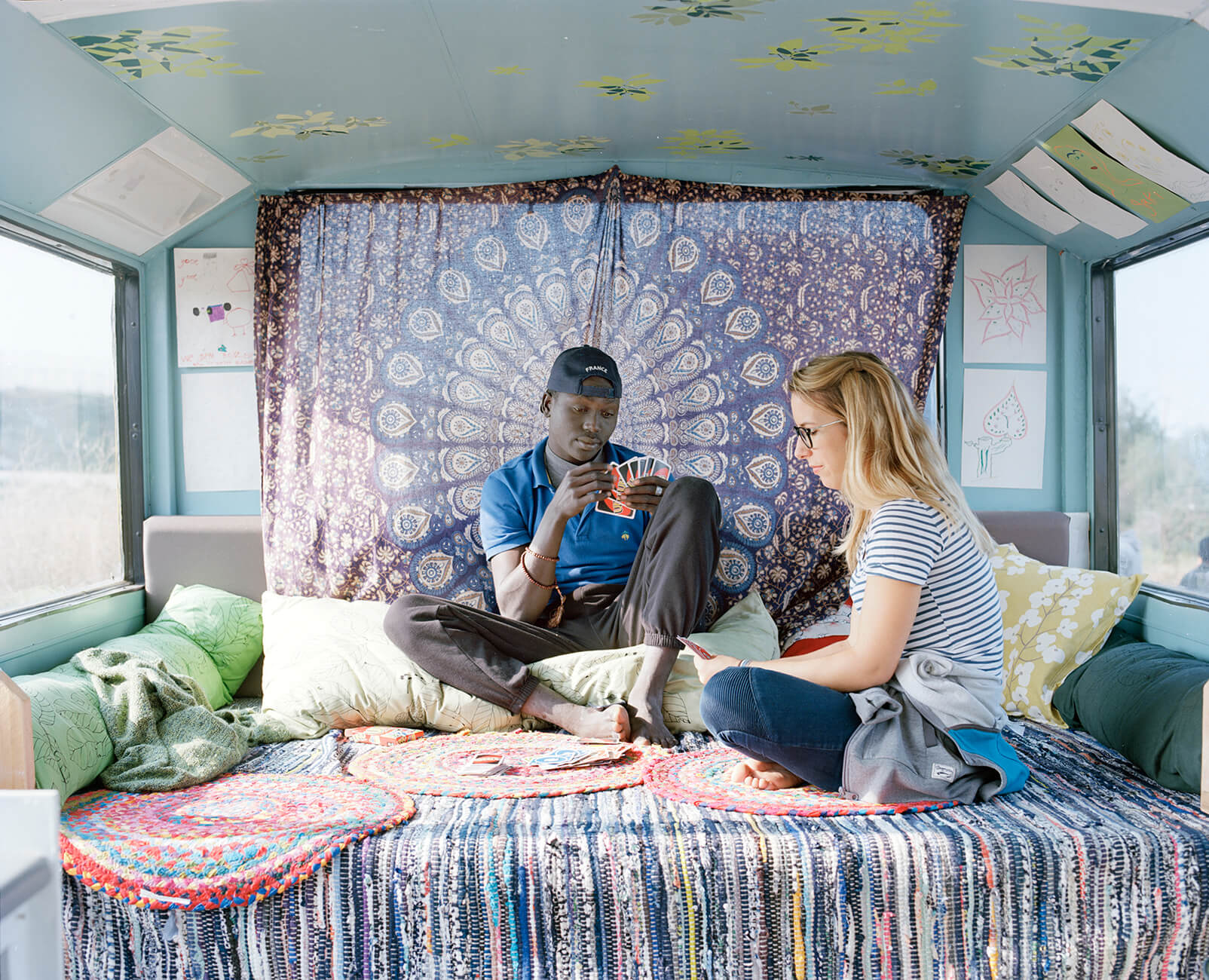
Elisa Larvego (*1984) lives and works in Geneva. A recipient of numerous grants and prizes, this Genevan artist no longer needs an introduction. A former student of Bruno Serralongue, they have remained in close contact and worked together in the famous Calais ‘jungle’ where up to 10,000 migrants live in cramped conditions, while awaiting the end of their journey to England. She has also returned to the HEAD-Genève on numerous occasions, working as a guest artist for workshops in the In [...]
Elisa Larvego (*1984) lives and works in Geneva. A recipient of numerous grants and prizes, this Genevan artist no longer needs an introduction. A former student of Bruno Serralongue, they have remained in close contact and worked together in the famous Calais ‘jungle’ where up to 10,000 migrants live in cramped conditions, while awaiting the end of their journey to England. She has also returned to the HEAD-Genève on numerous occasions, working as a guest artist for workshops in the Information/Fiction module.
Her series Chicanes was presented by the Centre de la photographie Genève at the Rencontres d’Arles in the Cosmos section. This exhibition provided the artist with an opportunity to show her photographs of Calais to the public for the first time.
Chemin des Dunes
This photographic work evokes the connections between the refugees living in the Calais ‘jungle’ and the volunteers working there. The image of volunteers was very absent from the media and it was important to me to shine a light on their presence, as they play an essential role in the organization of life at the camp.
The environment at Calais is also represented through these images, thanks to the portraits which reveal as much the person as the space they occupy, but also through the shots of the landscape and dwellings that allow us to broaden and deepen our understanding or perception of this place. These photographs show the different living spaces within the camp: the women’s accommodation centre, the volunteers’ camp, and the jungle. They highlight the heterogeneous dimension of the spatial and human environment both in terms of the diversity of nationalities and cultures of the volunteers and the refugees. A heterogeneity that can also be seen in the different dwellings of the jungle which have sprung up alongside the official camp, resulting in a medley of makeshift constructions and containers.
These images are above all else the trace of my encounter with these people and this place. They create a certain ambiguity about the status of the people photographed, in that it is not specified who is the volunteer and who is the refugee, the helper and the person being helped, thereby hinting at the absurdity of an identity that shackles or liberates an individual according to their country of origin.